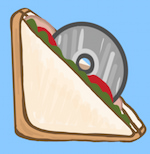After the industry nearly crashed and burned, two big names in home console gaming stood from the ashes. Nintendo was easily the king, but Sega was stealing some of the thunder with their marketing behind Sonic the Hedgehog and the Sega Genesis, thus starting the console wars. During this time, there were countless playground discussions about which was better: the Genesis or Super Nintendo, but it was a new name that would soon enter the ring and take over the conversation.
These days, the PlayStation name is pretty synonymous with gaming. It’s one of the three big console platforms and regularly pumps out high-quality exclusives. Every home console PlayStation puts out ends up among the best-selling consoles of all time, with the PS5 looking like it could potentially reach the top five before all is said and done. It has its faults, just like any of the other console manufacturers, but you can’t really think of video games these days without PlayStation coming up at some point. With all that said, did you know one of the biggest catalysts in Sony deciding to make their own console started with them being scorned by Nintendo?
A perfect match (for the time)
In the late 1980s/early 1990s, CD-ROMs were starting to become a big talking point in gaming. While cartridges were the standard, these discs could be manufactured cheaper and carry more data, letting games become bigger, at the cost of loading times being a bit longer. Nintendo wasn’t sold on the future of disc-based games, but Sony’s Ken Kutaragi convinced the big N to allow Sony to make a CD-ROM add-on he called the Play Station. At the time, Sony was mostly known for their hardware work for music players and televisions. In fact, Kutaragi made the audio chip in the SNES for Nintendo, albeit behind the back of Sony’s board members.
The plan was for Sony to develop an SNES add-on to play new disc-based games while players still had access to their favorite cartridges that Nintendo loved, somewhat similar to the Sega CD add-on. The two teamed up, and Sony made a prototype to give players the best of both worlds. It may feel weird to imagine now, but it was a match that could have been perfect. As with most things, it was greed that spoiled the stew.

Nintendo’s worst move ever
Behind the scenes, both companies didn’t really have the “teamwork makes the dream work” mentality. While Ken Kutaragi was very bullish on the future of gaming, Sony wasn’t convinced. He also took advantage of Nintendo’s lack of enthusiasm in CD games. He worked out a contract that essentially made it so Nintendo would only get money from hardware sales. All royalties on software would be owned by Sony. There were two reasons Nintendo agreed to this: Sony (at the time) wasn’t that interested in getting into gaming and Nintendo thought the Play Station was going to flop hard commercially.
While Nintendo never really changed its mind on the potential for CD games, it suddenly started to get worried. If the Play Station released, it would surely be popular because Nintendo’s name was in front of it. Sony could then leverage this experience and brand to make its own console as a potential rival. Nintendo leadership knew it had to do whatever it could to stop that future from happening. To no one’s surprise, the plan failed.
At this point, Sony’s biggest hardware competitor was Philips. Nintendo decided to ditch Sony and make a CD-ROM SNES add-on with this company instead. The juiciest part of this story is Nintendo completely went behind Sony’s back with this partnership. At the 1991 Consumer Electronics Show, Sony announced to the public that it was in the process of making an SNES CD-ROM in partnership with Nintendo. The very next day, Nintendo came out and announced the Philips deal with no mention of Sony whatsoever. Imagine you have just announced this amazing collaboration with the company that everyone wants to emulate, only to have them completely dump you out of nowhere the next day. This wasn’t just a change in plans; this was a coordinated move to humiliate Sony.
So, was what came out of the Nintendo and Philips partnership worth it? There never was an SNES add-on, but the Philips CD-I got what are generally considered the worst Mario and Zelda games on hardware that was never intended to be a video game console in the first place. Ouch.

What about Sony? After Nintendo dumped and humiliated the company for its biggest rival, Ken Kutaragi convinced chairman Norio Ohga to let him go forward with making his own console after the blatant disrespect from the gaming giant, even with the opposition of the company’s board. The result? The Sony PlayStation.
The rest is history
While there is definitely a case that Sony would have made its own console later on anyway, there is an undeniable link between Nintendo’s decisions and Sony going as hard into gaming as it did. It gave the push to what would become the leader in hardware sales. Nintendo’s aversion to CD-ROMs would also push SquareSoft away to make games for PlayStation exclusively for a while, most notably with the release of Final Fantasy 7. By the time the Nintendo 64 was released, the PlayStation was at the top of the market and wouldn’t look back. These exceptional sales performances continued with the gargantuan success the PS2 had, completely dwarfing the GameCube. It wouldn’t be until Nintendo caught lightning in a bottle with the Wii that it would outsell Sony’s PlayStation 3. There was a time when Nintendo thought it was truly untouchable. This arrogance would lead to the creation of their biggest enemy.







